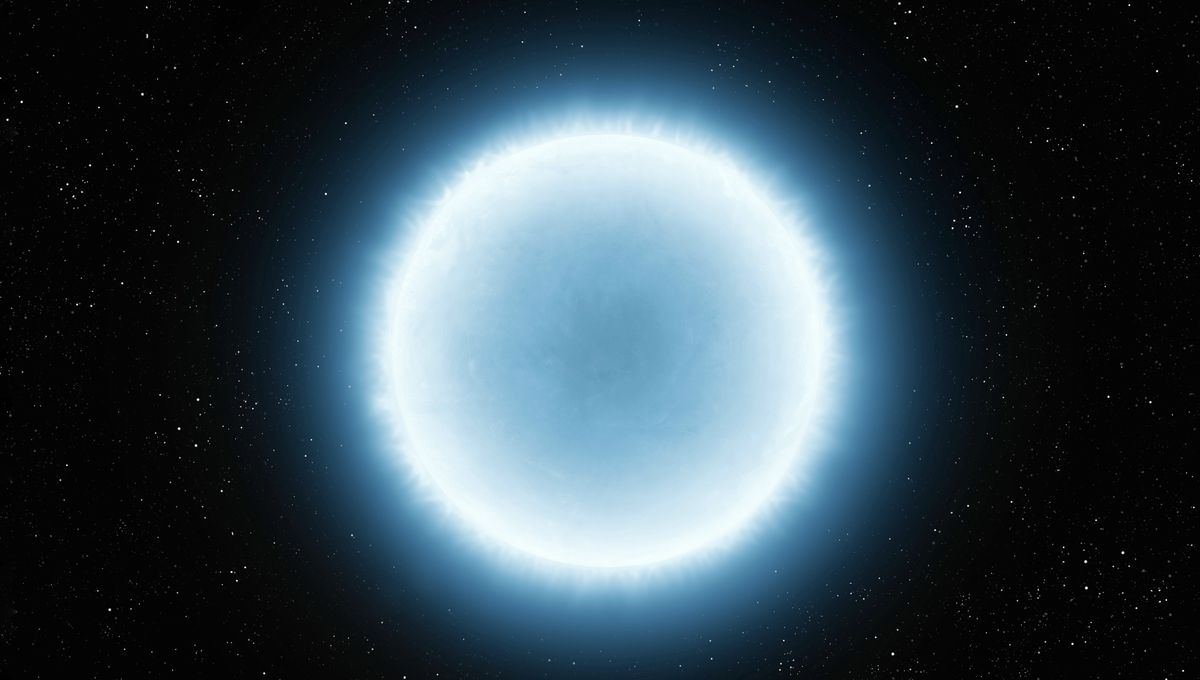
A recent study that predicted the white dwarf WD 0810-353 was going to come close enough to the Solar System to disrupt our comets carried a significant oversight, new research reveals. Besides removing one (somewhat distant) threat to humanity’s survival, the reasons do reveal an interesting star for other reasons.
The Gaia satellite has made extremely accurate measurements of the movements of a staggering number of stars. This has proven very useful for our understanding of the evolution of the galaxy, but most of the interest has been statistical, rather than in specific stars.
One of the exceptions is the white dwarf WD 0810-353. A report last year placed this star on a path to come quite close to the Sun in about 30,000 years, although close is in strictly astronomical terms, being thousands of times more distant than Neptune. Earth would not experience any direct effects, and the visitor would be hard to even see without a telescope.
However, the possibility of such a passage revived fears that have been slumbering since the discovery that a comet or asteroid did the (non-avian) dinosaurs in. One idea circulated at the time, which has experienced occasional revivals, is that the giant impactor was an Oort cloud object, whose orbit was perturbed by a passing star. According to this hypothesis, the star came close enough to the Sun to disrupt the orbit of a great many comets, sending some of them into the inner Solar System, in one case with lethal results.
Whether you accept this hypothesis or not as an explanation for the demise of T-Rex and friends – ok, not friends really, perhaps lunch – it does suggest that Oort cloud disturbances could be a problem.
Even under the original scenario, this would not affect Earth for quite a while. WD 0810-353 wouldn’t be making its visit for tens of thousands of years, and it would take even longer for any comets it disturbed to reach Earth.
Still, if you’re into long-term thinking this could have represented a danger we would eventually need to face. Now, however, a trio of astronomers has published a study concluding WD 0810-353 will probably never get that close, and if it does it will be much further down the track. They’ve chosen the quite delightful title “Not So Fast, Not So Furious: Just Magnetic” for their paper.
The idea WD 0810-353 is coming our way fast arose from two observations – its spectrum is substantially blueshifted, with notable spectral lines at shorter wavelengths than normal, and it’s barely moving sideways from our point of view. Normally, blueshift indicates an object coming towards us, and WD 0810-353’s shifting appears consistent with a velocity of 373 kilometers per second (around 834,000 miles per hour). A later study even suggested it might be moving ten times that fast.
Given its relatively modest 36 light-year distance, that’s fast enough to get here in 29,000 years – hardly a moment in the life of our planet. These facts were put together in a paper last year, and frankly, it’s almost surprising no apocalyptic cults seem to have cottoned onto it and dropped a few zeros from the anticipated time.
However, as the paper’s title indicates, the authors believe the reason for WD 0810-353’s spectrum lies in its powerful magnetic field. The processes that produce white dwarves out of sunlike stars sometimes leave them highly magnetized, and this seems to be the case for WD 0810-353.
Such magnetization affects a star’s spectral lines in quite complex ways, making them easy to misread. As white dwarves age, their magnetic fields can come to the surface of the star, increasing the variation of the spectral lines emerging from different parts of the star.
Taking what they consider the simplest and most likely interpretation of what the magnetic field is doing to WD 0810-353’s spectrum, the authors conclude it is coming our way at just 83 kilometers per second (around 185,000 miles per hour) although the error bars are so wide it could even be moving away from us.
At the very least this would mean it will take a lot longer before WD 0810-353 is troubling any of the Sun’s comets. Moreover, with a much lower speed, small sideways movements, which Gaia can measure accurately without spectra, become much more important, increasing the chance it will pass at a safe distance.
Isn’t it great that we can get back to worrying about the Armageddons we’re creating for ourselves?
The study is published in The Astrophysical Journal.
[H/T: Space.com]
Source Link: Cancel The Apocalypse, Dead Star Will Not Come Dangerously Close After All